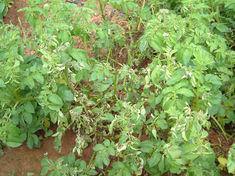
Wet and mild conditions and high associated Smith period pressure has made this a record year for blight, according to BPC’s Rob Clayton. So far there has been the highest recorded number of blight incidents since the BPC’s Fight Against Blight (FAB) (www.potato.org.uk/blight) campaign began in 2001.
“It’s vital blight scouts continue to keep up the good work and send in blight samples for analysis,” he says, “We need better understanding of the disease and how populations are spreading in different regions. Dr David Cooke and his team at SCRI, along with colleagues at Central Science Laboratory, have been processing a high volume of samples in the population study.”
Dr Cooke is expecting a high proportion of samples analysed this season will include the newer A2 strain. In 2006 the A2 blight population was recorded at 66% which has risen annually from 10% in the mid-1990’s. Where both A1 and A2 strains are present, sexual reproduction may take place, which would result in oospores.
Dr Cooke says, “Last season we saw a shift towards new A2 strains but less genetic diversity than you might expect if A1s and A2s were mating. So far it looks like this trend is continuing this year but its early days and we'll be able to say more once the full season's analysis has finished.”
Dr Cooke is presenting his studies on blight populations and this year’s findings, at one of the technical seminars at British Potato 2007, which takes place on November 28 and 29 at the Yorkshire Event Centre, Harrogate. “In the meantime we're looking closely through lab and field studies at how aggressive the new strains are.”



